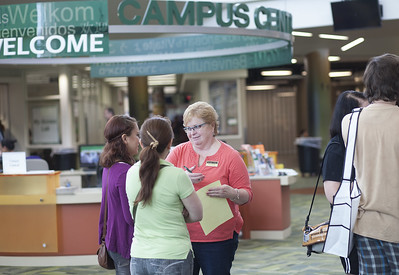According to data collected by the National Student Clearinghouse Research Center, Michigan ranks 5th for declining higher ed enrollment. Overall, Michigan’s post-secondary enrollment dropped 8.6% compared to fall 2019. The Center attributes reduced higher ed enrollment to the pandemic. With many colleges and universities offering online-only classes, people who might otherwise have enrolled have instead decided to wait out the pandemic.
It remains to be seen whether enrollment will once again increase when the pandemic is brought under control. An Axios poll released in August indicated that 22% of undergraduate students did not plan to enroll in fall semester classes. While many of these students will return to the classroom when the pandemic has resolved, that’s not necessarily true for lower-income and minority students. For these students, this “lost” year could mean that these students may never enroll.
That’s why it is important for community colleges to dig a little deeper to find students whose educational plans may have been derailed by COVID-19. Despite the protestations of college administrators who point to their declining enrollments, prospective students exist in apparently large numbers.
According to the State of Michigan, more than 85,000 people have applied to take advantage of the Futures for Frontliners program. That figure includes more than 2,100 people from Washtenaw County alone. They didn’t materialize out of thin air. They’ve been here the whole time. They’re obviously willing to enroll, but they lack the resources to do so.
“Free” works wonders for higher ed enrollment
The program provides free tuition for adults without a college degree who worked outside the home during the pandemic. Many of the applicants work in low-wage jobs to begin with. Pandemic aside, they would likely qualify for a substantial amount of need-based financial aid. Many would pay nothing at all to attend classes.
So why don’t they enroll? According to the National College Access Network (NCAN), less than half of all graduating high school students apply for federal financial aid. In their study, NCAN focused on low-income students – those most likely to get a substantial amount of financial aid. More than half of those high school students who did not apply for financial aid said that they skipped the FAFSA because “they didn’t know anything about financial aid.”
Simply put, graduating high school students didn’t apply for financial aid because they didn’t know:
- how to apply
- that they could apply
- need-based financial aid might make college free for them
Part of the reason a program like Futures for Frontliners attracts so much interest is that people understand the term “free college.” They may not understand financial aid, or how to ask for it, or how much they’re eligible for. That lack of knowledge might prevent them from seeking assistance.
Information is the key to increasing enrollment
If the Futures for Frontliners program can find 2,100 people in Washtenaw County in a matter of weeks who want to attend college but otherwise lack the funds to do so, it’s not because the State of Michigan did such a great job of publicizing the program. It’s because WCC hasn’t done such a great job of reaching these people – who would likely qualify for “free college” regardless of how they spent their summer vacation.
Worse, there are even more people in Washtenaw County who don’t qualify for the Futures for Frontliners program. But they do qualify for a lot of need-based financial aid. And they may not know it.
There are plenty of would-be students who could fill WCC’s classrooms today. Instead of doubling down on a tired marketing campaign or drawing up plans for a hotel, WCC should be working (a lot) harder to make prospective students aware of financial aid options. Need-based financial aid is always available. It would be a shame if the only thing that keeps some people out of the classroom is not knowing about it.
Photo Credit: COD Newsroom , via Flickr


























